Howard University's First Dean of Women Had to Fight to Keep Her Brookland Home
Returning to campus for the new school year in 1937, Howard University’s students received grim news: one of their deans, Lucy Diggs Slowe, was “reputed critically ill with pleurisy. Her condition was such on Tuesday that relatives were called to her bedside.”[1] After 15 years at the university, Slowe was a staple to the campus and its students – many of the women enrolled at the college saw her has a mentor and advocate for their education at Howard.
What the headline didn’t mention was what some believed was the cause of her declining health. There were rumblings that it was the efforts of key Howard University staff that had caused her illness, and they wouldn’t stop until Slowe left the school for good.
Who was Lucy Diggs Slowe, and what led to such harsh conflict between her and the university?
Born on July 4, 1883, Slowe spent her childhood with her aunt, who had adopted her after her parents’ deaths.[2] Determined to continue learning even after struggling in school as a child, she attended Howard as an undergraduate. Along with earning her bachelor’s degree, she also helped to found the first African American sorority, Alpha Kappa Alpha, in 1908.[3] A few years later she also earned a master’s degree from Columbia University in 1915, adding to her impressive credentials.[4]
While attending Columbia during the summers, Slowe accepted a position at a Baltimore school district. She continued to make lasting changes and speak her mind on various issues she found in the district, “argu[ing] her positions with fearless logic,” as Mary McLeod Bethune described her.[5] For some, Slowe’s direct style was admirable. For others, her ideas and how she argued for them were grating.
Slowe left the Baltimore district in 1915 – partially because of conflicts with the school’s principal but also due to bigger prospects in D.C. After moving back to the District, Slowe took a position at the Armstrong Manual Training High School, one of the very few high schools in the area that admitted African American students.[6] It was here, most likely, that she met Mary Burrill, an English teacher at another one of the African American high schools in town, Dunbar.
Mary Burrill was born to parents Clara and John Burrill in the early 1880s. Growing up in Washington D.C., Burrill was dedicated to learning, and after graduating high school, she left the District to attend Emerson College in 1904, becoming the first African American woman awarded a degree there. Burrill was also a playwright, and authored plays such as Aftermath and They That Sit in Darkness that focused on intersectional issues like women’s rights, racial disparities in healthcare, and other themes that would later percolate in the Harlem Renaissance.[7] With her own strong teaching philosophy and ideas, Burrill returned to her alma mater, Dunbar High School, to teach English for the next generation of students.[8]
Both working in D.C., Slowe and Burrill met and became close. They moved in together, living in two places before finally settling into their forever home at 1256 Kearney St., NE in Brookland. The Queen Ann style home had a ton of character and the neighborhood meant a better commute to work for both women, with Burrill at Dunbar and Slowe set to begin a new position at her alma mater, Howard University.
Single women living together was not entirely uncommon in the African American community in the early 20th century; doing so allowed them to have their own space while also being able to share expenses. Slowe and Burrill’s relationship changed the nature of the living situation; co-habitation was a viable option for women, but same-sex relationships were condemned and deemed taboo.[9]
Neither Slowe nor Burrill publicly spoke about their relationship, during their lives or afterwards, but there were hints of their love for one another. Years after Slowe’s death, “Burrill kept Slowe’s picture on her piano, next to a vase filled with white carnations.”[10] Burrill had also had a previous relationship with another woman as a teenager, and her letters to her proved her affections in writing.[11]
Living together and having such important roles in their careers also led both women to wanting a more private personal life; they were well-known outside of their home, and wanted to avoid judgement from others, including from their colleagues.
Slowe in particular took on more responsibility and visibility in her new role. She was Howard’s first Dean of Women – a position designed to mentor the university’s female students. It was not an easy job to say the least. On the campus, other administrators at the university didn’t know what Slowe’s position meant – she was the first to exist, and female students were treated differently to their male counterparts.
Prevalent attitudes about the value of higher education for women often placed more emphasis on forging friendships and finding a husband than academics. As the Afro American printed in a 1937 opinion piece by Lillian Johnson, one of the main reasons women went to college was “that all of the best men go to college, and that, therefore your chance of meeting Mr. Right will be multiplied, oh, ever so many times.”[12]
When Slowe was first hired, it was proposed that she live on campus (contrary to her male counterparts being allowed to live off-campus) and serve in a matron capacity in addition to her other responsibilities. Slowe chafed at the notion, arguing that “the Dean of Women is too valuable an officer of the University to have time devoted to minute details of dormitory administration.”[13] Howard University president J. Stanley Durkee ultimately waived the campus living requirement. Dean Slowe could live at home and commute to work. Durkee also sent a letter to all staff and faculty to “cooperate with the Dean of Women in every way” right as she started the school year.[14]
At this point in her life, Slowe had fostered and created deep friendships and connections throughout D.C. and the country – some of these friends included Mary McLeod Bethune, Jean Toomer, and Georgia Douglas Johnson, among many others. Slowe was also known to invite her students over to her house on multiple occasions, further cementing her role as an advisor in the community.[15]
Five years into Slowe’s tenure, Durkee left the university, and, after a long selection process, Mordecai Wyatt Johnson became the new president at Howard University in 1926. While the vote confirming to offer him the position was a steep ‘yes’, he received judgement as being “temperamentally unsuited to be president of the university” by a small minority of other board members. Additionally, Johnson hadn’t been the first candidate offered the position, possibly hinting at those concerns.[16]
Despite any qualms against him as a candidate, Johnson’s inauguration as president came with satisfaction. He was Howard University’s first Black president, and can be credited with much of the modernization and accreditation of the school during his tenure.[17] But while Johnson helped Howard grow, his more conservative beliefs resulted in some major tension and conflict among various faculty members, including – and perhaps most notably – Lucy Diggs Slowe.
As the Dean of Women, Slowe acted as an advisor to all of the female students enrolled at Howard University – as many as 1,000 in a given year.[18] Consistent with her own background as trailblazer, she advocated for her students to pursue whatever career track they desired rather than the traditional role as educators or teachers. She also didn’t hold back from voicing her opinions, and, as one account from the time noted, ”debate[d] the issues not with feminine grace but in the manner of a man to man argument.”[19] With support from various faculty and community members, she was a leader to those that respected her.
Slowe's ideology put academics and career development first. In her address to students at their annual women’s dinner (which she created as the dean), Howard University’s newspaper, The Hilltop, reported that “Slowe’s main interest is broadening the vision of the women and in training young women for the future.”[20] Her persistence in giving her students more opportunities at the university reflected her own path of leadership and learning throughout life.
With her own ideas about women’s education and how she handled conflict, Slowe butted heads with Johnson early in his tenure as president. What began as a conflict between her and another faculty member resulted in Slowe realizing that Johnson didn’t seem to respect her position, or even understand it. He hadn’t tried to see what she did as dean and therefore “cannot have first hand knowledge of her [Slowe’s] work.”[21] After this first rift, the issues only escalated and Johnson took aim at Slowe’s living arrangement.
While male deans at Howard University had the option of living off-campus and some owned private residences, Johnson decided that Slowe was no longer going to be afforded the same allowance. This meant that despite having the same position as her male counterparts, she would be required to live in the dorms with her students, putting her in a “matron” role rather than the academic and administrative one she’d been hired to do.[22] Slowe argued that her agreement with former president Durkee had outlined her job responsibilities and off-campus living, but she had little success; Johnson and the Board of Trustees continued to apply pressure.[23]
Despite the tension with Johnson and other administrators, Slowe remained well-liked and praised throughout campus. The university newspaper detailed various achievements and reported on events that she hosted, including the on-campus annual women’s dinner that was her brainchild. Each year, The Hilltop raved about the success of the dinner, and just how much the women at Howard (including alumni) anticipated it. At the 15th dinner in 1936, her students even gifted her a gold watch to show their thanks for her lasting dedication to the event and students.[24]
Backed into a corner, Slowe made herself clear that if she was going to live on campus, she expected a substantial home (fully furnished, too) due to her position, and that no efforts would be made to sell the house she already owned with Mary Burrill.[25] From Slowe’s perspective, if they would require her to live on-campus, she would be given equal and sufficient housing, comparable to other male faculty and staff members living there as well.
As the tension festered, others took notice. Both inside and outside of Howard, supporters of Slowe voiced their opinions on the matter, notably criticizing Johnson as a main antagonist of the conflict. From her students to other female deans, as well as her friends across the country, many supporters wrote letters of support on Slowe’s behalf. Some even tried to talk with the board themselves privately, as the situation garnered the public’s attention through press coverage in various newspapers.[26]
While she continued to face opposition within the university administration, Slowe’s health took a turn for the worse after the 1936 school year ended. By September, newspapers reported on her declining condition, with her supporters hinting that the stress caused by the prolonged conflict at Howard had led to her illness. Nonetheless, President Johnson gave Slowe a harsh ultimatum: return to campus and work, or be dismissed and replaced.
As it turned out, a return would be impossible.
Lucy Diggs Slowe passed away in her Brookland home on October 21, 1937. After her death, reports and testimonies surfaced about the mistreatment she had faced during her tenure at Howard. As criticisms of the university mounted, a large funeral service was held on campus to honor and remember the well-liked and respected dean. Numerous faculty and students from Howard attended, with one notable exception: “she specifically asked that the university head [Johnson] have no share on the program.”[27] Instead, another former Howard dean spoke at the service, and highlighted her achievements both in the classroom and in her life.
After the funeral, tributes and calls to action in honor of Slowe continued. Writing in the Afro American a few weeks later, her fellow faculty member Dr. Kelly Miller urged the university to honor her posthumously, calling her “the most eminent color female in the field of higher education.”[28] Miller’s piece highlighted her impact on her students and the African American community at large, and paid testament to her legacy after death.
After Slowe’s passing, Burrill retired from teaching in 1944, left D.C. for New York City, and never returned to the area. Before leaving, she wrote a scathing letter to the administration which, according to Slowe biographers Caroll Miller and Anne Pruitt-Logan, “excoriated them for the meager funding Slowe received while she was a university administrator,” among other issues.[29]
Though Slowe had passed, her impact continued to be felt. In 1948, Howard University dedicated the Lucy Diggs Slowe Hall at 1919 3rd St. NW -- a testament to her impact on the campus and lives of so many female Howard students.[30]
Over 70 years later, the property that Slowe and Burrill owned at 1256 Kearney St., NE was nominated to the DC Inventory of Historic Sites. Jacqueline Drayer of the DC Preservation League described the home’s significance to a local television station during the application process: “Lucy and Mary formed what was really the most prominent same-sex female couple in Washington, D.C. in the early 20th century…. They're black women, they're women who are part of the LGBTQ community and of course, [their] professional lives are really incredible. If we don't preserve sites that relate to histories like that, we lose them.”[31]
The application was approved in 2020.
Footnotes
- ^ ”Seriously Ill,” The Afro American, (Baltimore, MD) 18 September 1937, 1. https://news.google.com/newspapers/p/afro?nid=UBnQDr5gPskC&dat=19370918…;
- ^ Helen Verongos, “Overlooked No More: Lucy Diggs Slowe, Scholar Who Persisted Against Racism and Sexism,” The New York Times, (New York City, NY), 7 October 2020, https://www.nytimes.com/2020/10/01/obituaries/lucy-diggs-slowe-overlooked.html
- ^ Robert Malesky, “Lucy Diggs Slowe and Mary Burrill and the fight to stay in their Brookland home,” Bygone Brookland, 15 April 2015, https://bygonebrookland.com/2015/04/15/lucy-diggs-slowe-and-mary-burril…
- ^ Helen Verongos, “Overlooked No More: Lucy Diggs Slowe, Scholar Who Persisted Against Racism and Sexism,” The New York Times, (New York City, NY), 7 October 2020, https://www.nytimes.com/2020/10/01/obituaries/lucy-diggs-slowe-overlooked.html
- ^ Caroll L.L. Miller and Anne S. Pruitt-Logan, Faithful to the Task at Hand, (New York: State University of new YorkPress, 2012), 45.
- ^ “African American Schools,” DC Preservation League, accessed 31 March 2022. https://historicsites.dcpreservation.org/tours/show/5
- ^ Elizabeth Cobb and Jordan Curl, Biographical Sketch of Mary P. Burrill, (Alexandria, VA: Alexander Street, 2018).
- ^ ibid.
- ^ ”Slowe-Burrill House,” National Park Service, accessed 3 March 2022, https://www.nps.gov/places/slowe-burrill-house.htm
- ^ Robert Malesky, “Lucy Diggs Slowe and Mary Burrill and the fight to stay in their Brookland home,” Bygone Brookland, 15 April 2015, https://bygonebrookland.com/2015/04/15/lucy-diggs-slowe-and-mary-burril…
- ^ Elizabeth Cobb and Jordan Curl, Biographical Sketch of Mary P. Burrill, (Alexandria, VA: Alexander Street, 2018).
- ^ Lillian Johnson, ”..College..What Do You Want It to Do for You and Why?”, The Afro American (Baltimore, MD), 18 September 1937, 7. https://news.google.com/newspapers/p/afro?nid=UBnQDr5gPskC&dat=19370918…
- ^ Caroll L.L. Miller and Anne S. Pruitt-Logan, Faithful to the Task at Hand, (New York: State University of New York Press, 2012), 124.
- ^ ibid, 93.
- ^ “Slowe-Burrill House,” DC Historic Sites, accessed March 31, 2022. https://historicsites.dcpreservation.org/items/show/1085.
- ^ “Johnson Newly Elected Head of Howard,“ The Afro American, 3 July 1926. https://news.google.com/newspapers/p/afro?nid=UBnQDr5gPskC&dat=19260703…
- ^ ”Mordecai W. Johnson,” Howard University, accessed 3 March 2022, https://150.howard.edu/facts/mordecai-w-johnson
- ^ Kelly Miller, ”Miller Urges Howard to Honor Dean Slowe,” The Afro American, (Baltimore, MD), 6 November 1937, 7. https://news.google.com/newspapers/p/afro?nid=UBnQDr5gPskC&dat=19371106…;
- ^ Caroll L.L. Miller and Anne S. Pruitt-Logan, Faithful to the Task at Hand, (New York: State University of new YorkPress, 2012), 45.
- ^ ”Women Hold Annual Dinner Gala Event,” The Hilltop (Washington, D.C.), 10 November 1933, 4. https://dh.howard.edu/cgi/viewcontent.cgi?article=1038&context=hilltop_…
- ^ Caroll L.L. Miller and Anne S. Pruitt-Logan, Faithful to the Task at Hand, (New York: State University of new YorkPress, 2012), 138.
- ^ Helen Verongos, “Overlooked No More: Lucy Diggs Slowe, Scholar Who Persisted Against Racism and Sexism,” The New York Times, (New York City, NY), 7 October 2020, https://www.nytimes.com/2020/10/01/obituaries/lucy-diggs-slowe-overlooked.html
- ^ Caroll L.L. Miller and Anne S. Pruitt-Logan, Faithful to the Task at Hand, (New York: State University of new YorkPress, 2012), 188.
- ^ "H.U. Women Hold 15th Annual Dinner," The Hilltop, (Washington, D.C.), 11 November 1936, 3. https://dh.howard.edu/cgi/viewcontent.cgi?article=1072&context=hilltop_…
- ^ Caroll L.L. Miller and Anne S. Pruitt-Logan, Faithful to the Task at Hand, (New York: State University of new YorkPress, 2012), 183-4.
- ^ ibid, 188-93.
- ^ "Flash: Dean Slowe Buried from H.U. Chapel – Leading Schoolmen Eulogize Famed Educator," The Afro American, (Baltimore, MD), 30 October 1937, 3. https://news.google.com/newspapers/p/afro?nid=UBnQDr5gPskC&dat=19371030…;
- ^ Kelly Miller, ”Miller Urges Howard to Honor Dean Slowe,” The Afro American, (Baltimore, MD), 6 November 1937, 7. https://news.google.com/newspapers/p/afro?nid=UBnQDr5gPskC&dat=19371106…;
- ^ Caroll L.L. Miller and Anne S. Pruitt-Logan, Faithful to the Task at Hand, (New York: State University of new YorkPress, 2012), 233.
- ^ "Lucy Diggs Slowe Hall – 1919 3rd St NW," Howard University, accessed 3 March 2022, https://dh.howard.edu/pittcourier_buildings/7/
- ^ Kellye Lynn, "Push for Preservation: Home of 1920’s African-American educators could become DC landmark," WJLA, 26 February 2020.


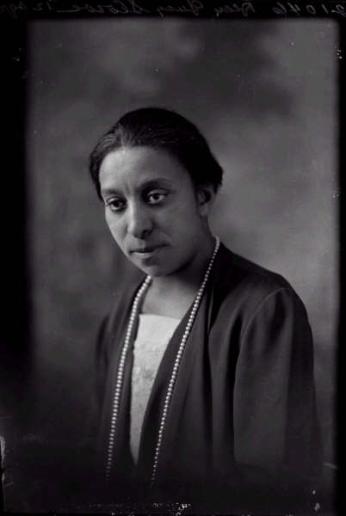
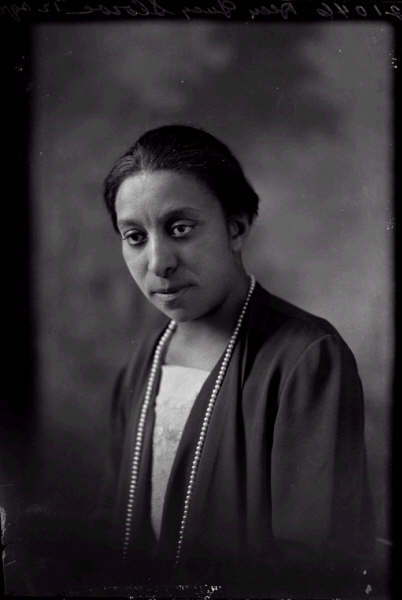
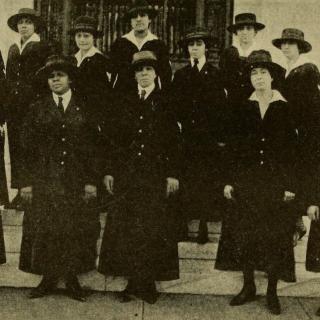
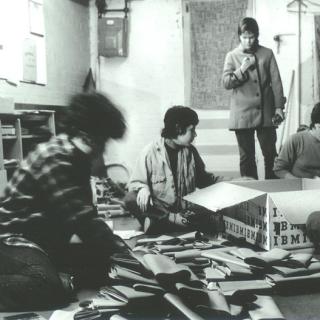
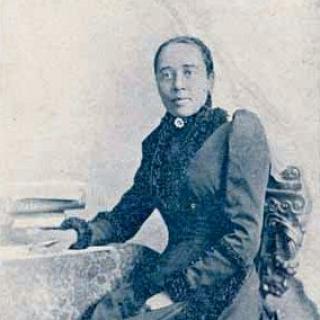
![Sketch of the mythical fuan by Pearson Scott Foresman. [Source: Wikipedia]](/sites/default/files/styles/crop_320x320/public/2023-10/Goatman_Wikipedia_Faun_2_%28PSF%29.png?h=64a074ff&itok=C9Qh-PE1)












